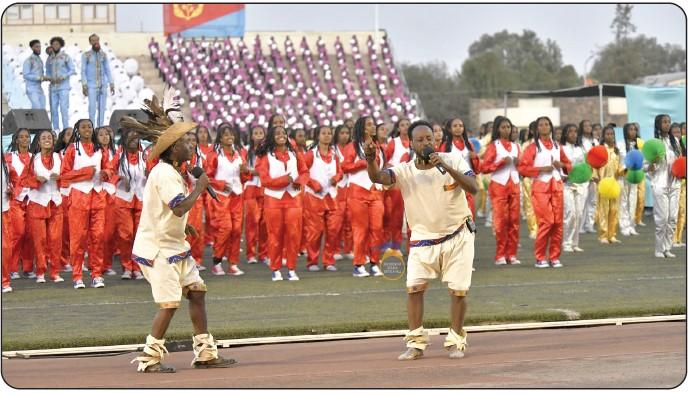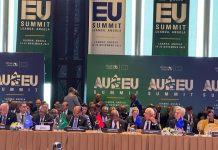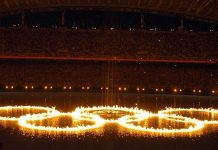Africa-Press – Eritrea. Art remains one of humanity’s oldest and most powerful forms of expression. Across continents and throughout millennia, people have turned to art to capture emotions, document history, inspire movements, and define culture.
This universal value of art is especially evident in the Eritrean context. Here, art has not only been a cultural tradition but also a political force and a symbol of national pride. From ancient expressions rooted in daily life and spirituality to the revolutionary creativity that fueled the liberation struggle, and into today’s vibrant cultural scene led by dynamic youth, art continues to shape Eritrea’s identity and resilience. This article examines the enduring role of art in Eritrean society, both past and present, while honoring the contributions of young artists who carry the torch forward.
A multifaceted phenomenon
Art, which is broadly defined as a visual object or experience consciously created through skill or imagination, is a multifaceted phenomenon that often serves as a profound reflection of our innermost emotions and the world around us. According to an extensive body of scholarly research from across the globe, art in its various forms has been practiced and produced by virtually all human societies and cultures throughout history. It is widely regarded as one of the most distinctive and defining characteristics of humanity, setting us apart from all other species.
There is no single feature that grants art its significance in the broadest sense. Instead, a constellation of factors underscores its value to individuals and communities alike. Art functions as a collective memory for people and societies, helping to shape identity and foster a sense of belonging. It also plays a vital role in cultivating healthy societies, bringing together diverse individuals and communities to form a more unified and tightly knit social fabric.
As scholars Aleksandra Sherman and Clair Morrissey have eloquently observed, “Scientists, humanists, and art lovers alike value art not just for its beauty, but also for its social and epistemic importance – that is, for its communicative nature, its capacity to increase self-knowledge and encourage personal growth, and its ability to challenge our schemas and preconceptions.”
Art in the Eritrean context Within
Within Eritrea, art has long held a special place in society. For centuries, it was deeply woven into the fabric of sociocultural and religious life, everyday traditions, and the lived experiences of communities throughout what is now modern-day Eritrea. Although locally produced, Eritrean art was influenced by cultural elements from surrounding regions and beyond.
During the protracted struggle for national liberation, art – and particularly the efforts of young artists – again assumed a vital role. Embodying principle, courage, and resistance, these artists stood shoulder to shoulder with the people. Through stirring music, poignant poetry, powerful paintings, and striking photography, they conveyed the pain and resilience of the Eritrean people. Their work disseminated the messages of the freedom movement, raised public awareness, and extended outreach to the international community, offering a glimpse into Eritrea’s fight for self-determination.
In those difficult times, art provided strength and encouragement to both civilians and fighters. It celebrated hard-won victories, sustained morale, and gave voice to a collective aspiration for justice and independence. In doing so, it became an indispensable part of the liberation movement.
A vibrant and essential part of life in Eritrea
Today, art remains a vibrant and essential part of life in Eritrea, with many of the country’s most gifted and prolific artists being young men and women. Their passion, creativity, and innovation have resulted in a remarkable stream of artistic production, enriching the cultural landscape and strengthening national identity.
As in the past, Eritrea’s eloquent young writers, singers, musicians, and poets continue to tell our shared stories, honoring our heritage and uniting us through their work. They also play a critical role in inspiring national pride, uplifting public morale, and reinforcing our collective confidence.
Whether at weddings, graduations, birthdays, or national celebrations, young Eritrean artists captivate audiences with their powerful lyrics and moving melodies, evoking both joy and profound emotion. Meanwhile, our young painters and photographers continue to offer breathtaking visual works – images that speak volumes, stir the soul, and leave lasting impressions. Many who attended recent national events (such as those associated with May 24th and June 20th) in Eritrea praised the exceptional quality and emotional depth of the artwork on display.
Eritrea’s youth – whether serving as doctors, nurses, teachers, engineers, or in countless other roles – are the backbone of the nation’s building and development. Among them, artists hold a special place. Their work not only touches lives and strengthens our cultural heritage, but also fosters unity, resilience, and hope.
Conclusion
In every brushstroke, melody, stanza, or photograph, art tells our story. It is a testament to who we are, where we’ve been, and where we are going. In Eritrea, art has stood as a symbol of resistance, a celebration of heritage, and a vehicle for healing and hope. Our artists today are not only preserving this legacy but also pushing its boundaries – bringing new energy, fresh perspectives, and bold ideas to the forefront.
As a society, we must do more than admire their talent. We must support them, nurture their creativity, and ensure they have the space and resources to thrive.
For More News And Analysis About Eritrea Follow Africa-Press







